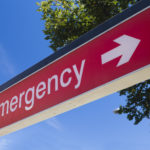Did you know around 48 million people get sick every year from food-borne illness?
Are you serving food to people at a restaurant or at home but not sure about food safety? Not to worry! In this guide, we’ll cover ten tips you need to know when it comes to serving food to people.
Want to learn more? Keep reading to find out.
Food Safety: A Guide
A kitchen is the heart of the home. Family and friends gather to eat food together. If you don’t know a lot about food safety, potential poisoning can occur.
These infections tend to go away on their own, but in severe cases, people have to go to the hospital. Read here about a food safety management package. Discover more about food safety so you can protect your friends and family.
1. Wash Your Hands Well
Make sure you wet your hands with warm water and apply soap. Rub your hands together and scrub all parts of the hand for over twenty seconds. Rinse well and then dry your hands with a clean paper towel.
While you are cooking, wash your hands after touching any fish, eggs, poultry, or uncooked meat. Bacteria from these foods will contaminate fresh produce and cooked foods. If you cough or sneeze, clean your hands right away.
2. Wash Cooking Surfaces
Make sure you sanitize all areas you’re using when preparing your food. Wash the surfaces with soapy hot water. Consider using one tablespoon of white vinegar per gallon of water to clean surfaces.
3. Clear Out Fridge Every Week
Leftover food and old ingredients can clutter your refrigerator. It’s an easy mistake to grab something and forget that you bought it weeks ago. Check the expiry dates on these items often.
Throw out cooked leftovers after four days. Get rid of raw meat after one to two days.
Discard any food that’s recalled. The news reports any foods associated with the outbreak of food-borne illness.
4. Sanitize Your Appliances
It’s wise to clean your appliances once a week. Pay close attention to handles and buttons where cross-contamination can occur. Clean the outside and inside of all devices in your kitchen.
Washing will remove dirt, food residues, and grease. Cleaning can spread other bacteria around.
Disinfecting will kill organisms that can cause food poisoning. You can find disinfectants that are sprays, wipes, or liquids. They will kill most viruses and bacteria.
You can mix your own cleaner at home. Store the disinfectant in a spray bottle and make a new one every few days.
Spray down your counter-tops with your disinfectant and wipe it off with a clean cloth. Dishrags get contaminated over time. Clean your can-openers and wipe them with your cleaner.
Use a clean dishcloth every day. If you don’t have a dishwasher, put your plastic scrubbers in a disinfectant solution for ten minutes.
5. Wash Fruits and Vegetables
Rinse vegetables and fruits under running water before eating, cutting, or cooking. Pick up a water filter, so you’re washing with purified water instead of regular tap water.
If you plan to cut or peel the produce before eating, rinse them first. This will prevent microbes from transferring to the inside of the produce.
6. Defrosting Food
Make sure you defrost food in the microwave or in the fridge. Don’t defrost it on the counter.
Perishable foods shouldn’t thaw on the counter for over two hours. The center of food remains frozen, but the outer surface could enter a dangerous zone. Bacteria can multiply at a certain temperature and quick.
If you’re in a rush, use the microwave. You can also thaw meat in cold water if it’s in airtight packaging. Change the water every half hour.
This will ensure that your meat stays cold. Use the thawed food right away.
7. Have Separate Spaces for Different Food
Keep two cutting boards, one for produce, and the other for meat. Make sure the meat cutting board’s sprayed down after use. Rinse it in clear water before you use it again, so you remove the disinfectant.
Bacteria from uncooked poultry, fish, and meat, can contaminate cooked food. Keep poultry and raw meat in sealed plastic bags so their juices don’t fall on other food.
8. Regulate Food Temperatures
Use a food thermometer to find out the temperature of egg, poultry, or meat dishes. This can help prevent illness.
The USDA suggests you have an internal temperature of 160°F for pork and ground beef. They recommend 165°F for poultry. For fish, make sure its 145°F. Educate your family on these regulations to help prevent food poisoning.
9. Cook Eggs Well
Before cooking with eggs, make sure you wash them with care. Clean and intact shells can already have salmonella on them. Cook eggs well so both the white and yolk are firm.
You don’t want to make anyone sick in your kitchen.
10. Don’t Eat Food Left Out
If you forget eggs, fresh fruit, or meat on the counter, don’t eat them if they’re left out for more than two hours.
If you leave food out of the freezer for more than two hours, the temperatures become unsafe. Bacteria multiply fast in this range.
Want to Learn More?
We hope you found this article on food safety insightful. Remember, wash your hands and any produce well. Make sure you thaw food in cold temperatures and cook right away afterward.
Want to learn more? Check out our guide on water filtration systems.

